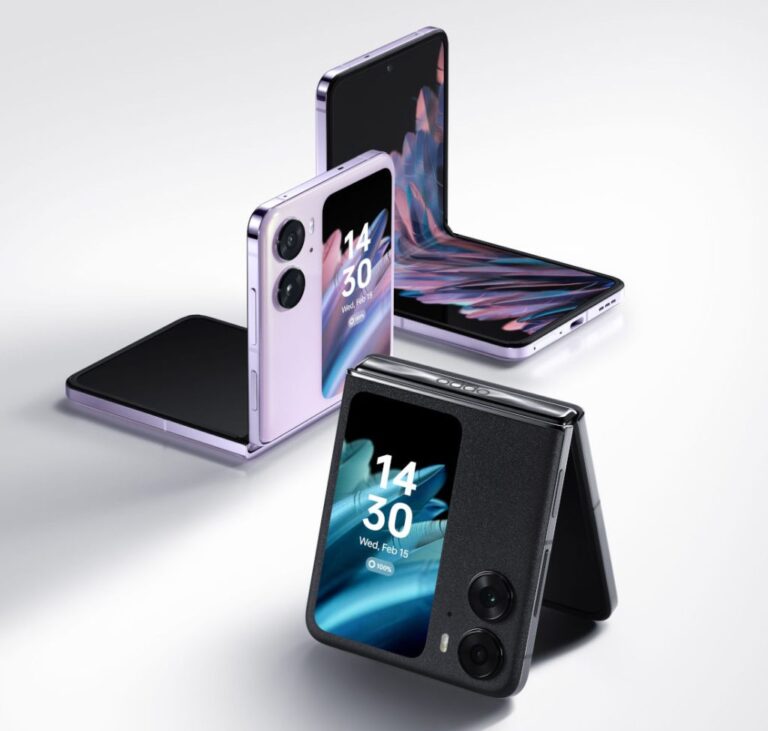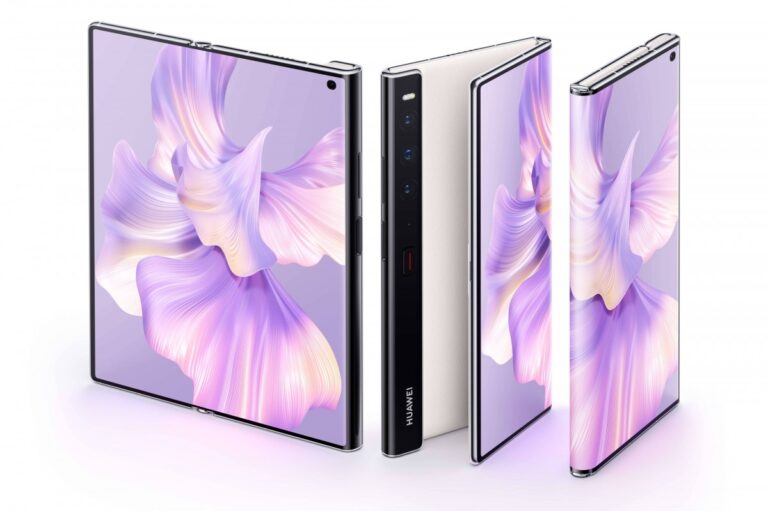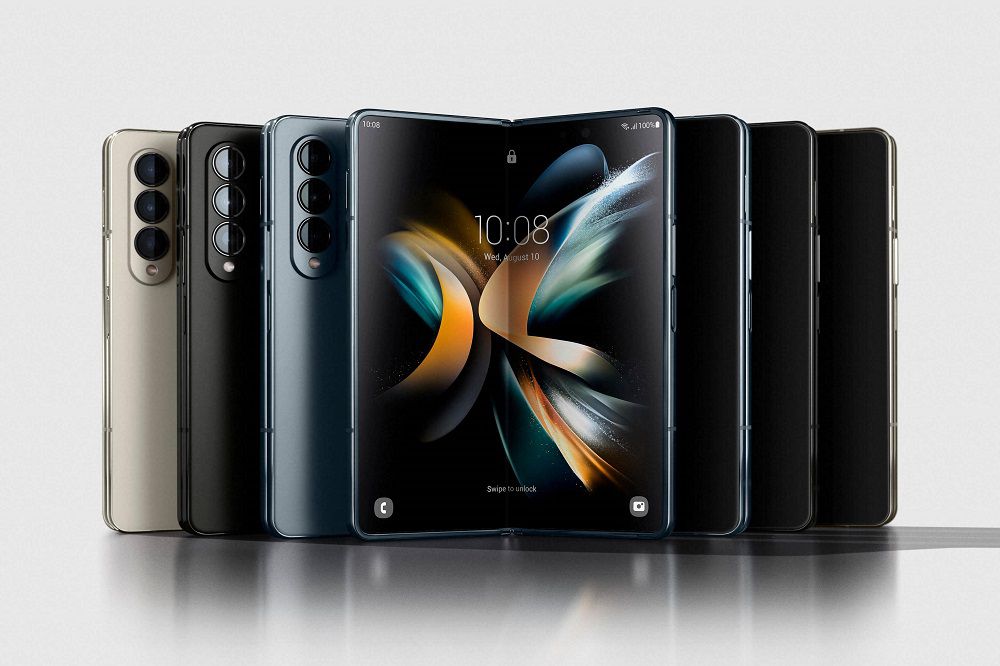TOP FOLDABLE SMARTPHONES OF 2023
OPPO FIND N2 FLIP

Oppo has entered the foldable smartphone market with the Find N2 Flip, and it seems to be a successful move for the Chinese manufacturer. The device boasts many advantages and few faults, making it a worthy competitor to Samsung’s offerings.
One of the standout features of the Oppo Find N2 Flip is its exceptional build quality and handling. The hinge is more flexible than that of the Samsung Galaxy Z Flip 4, and its teardrop shape is better, preventing any accumulation of dust. Additionally, the internal 6.8-inch panel with a 21:9 ratio is beautiful, with accurate color reproduction and satisfactory brightness. When the phone is opened, the crease is barely noticeable.
Oppo took a slightly different approach than Samsung for the external screen. Making it larger at 3.26 inches, which is particularly convenient for taking selfies without using the front sensor. The ColorOS interface is also noteworthy, offering a fluid, simple, and customizable user experience.
If there are any criticisms of the Oppo Find N2 Flip, it would be the lack of a telephoto lens and a somewhat not great performance in the photography department compared to its competitors. However, the device’s battery life is on par with other flip phones, lasting a day.
In conclusion, the Oppo Find N2 Flip is a well-executed foldable smartphone that competes with Samsung’s offerings. It has a great build quality, a beautiful display, and a user-friendly interface. Despite some minor drawbacks, the device is definitely worth considering for anyone in the market for a foldable smartphone.
SAMSUNG GALAXY Z FLIP 4

The Galaxy Z Flip 4 was the leading folding clamshell smartphone before the Oppo Find N2 Flip was released, but that does not diminish its appeal. It outperforms its competitors in some areas, such as waterproofing, where it is rated IPX8. Making Samsung the only manufacturer to offer waterproof foldable smartphones. Over the years, Samsung has refined its formula, but the crease is still visible and can be felt under the finger, and a gap is present when the device is folded. However, the Z Flip 4 stands out in other areas, including its luxurious look, 6.7-inch OLED screen with flamboyant colors, a maximum refresh rate of 120 Hz, and a 22:9 ratio, which does result in black bands when watching videos.
Although the Z Flip 4’s camera is less efficient than the Z Fold 4 and lacks a telephoto lens found in the Oppo Find N2 Flip, the portrait mode is precise, the Night mode offers beautiful results, and the shots have nice sharpness in standard light conditions. The battery life has improved from the previous model but is still typical, providing a maximum day of use.
The Z Flip 4’s software management is where it truly shines. The Flex mode, which splits the screen in two, is convenient when the device is folded at 90°, such as when placed on a desk. The external 1.9-inch screen is highly useful, serving as a smartwatch-like display for notifications, music controls, widgets, and even making calls.
SAMSUNG GALAXY Z FOLD 4

Samsung introduced its foldable line of smartphones with the first Fold model in 2019, and in 2022, the company launched the fourth generation, which comes with significant improvements. The Galaxy Z Fold 4 shares many features with its predecessor, the Galaxy Z Fold 3, including a similar design. The external screen, which is narrower than that of a standard smartphone, takes some getting used to when typing messages. But it is very convenient for quick everyday uses on its 6.2-inch screen.
Now let’s talk about the fold and hinge. The crease is visible and palpable, and the hinge may be a bit stiff initially but gradually loosens over time. However, one of the downsides of the Z Fold 4 is the gap that remains between the two parts of the internal screen when it is folded.
Regarding the internal screen, it measures 6.7 inches but has an unusual 23.1:9 aspect ratio. Resulting in an almost square screen similar to a small tablet. The OLED panel used by Samsung is exquisite, and the brightness can reach a peak of 899.5 cd/m². However, the default color calibration can be erratic. And you may need to adjust the settings to achieve a more natural look.
Samsung’s One UI is a strong point for the Z Fold 4. The company has done an excellent job of managing the screen format and multitasking. Allowing up to six apps to run simultaneously on the internal screen. Furthermore, the Flex mode, which divides the screen into two distinct parts, is great. The Z Fold 4 boasts excellent photography capabilities. With a 50 MP lens with an aperture of f/1.8. And the addition of a 10 MP x3 telephoto lens with an aperture of f/2.4.
The Z Fold 4 is running the Snapdragon 8+ Gen 1 chip, the top-of-the-line processor in 2022. So there are no concerns about overall performance. However, the battery life is limited to a single day. And the 25W charging is slow for such an expensive device.
If you already own the Z Fold 3, it might not be worthwhile to invest in this new model. Still, if you want to experience the mini-tablet format, the Z Fold 4 is an excellent option to consider.
HUAWEI P50 POCKET AND MATE XS 2

Huawei entered the foldable screen market early. But due to the absence of Google services, 5G, and a high price point, their foldable devices are not highly recommended.
The Huawei P50 Pocket comes with a Snapdragon 888 SoC, 8 or 12 GB of RAM, and 256 or 512 GB of storage. It features a 6.9-inch AMOLED display with a discreet fold. But the external screen is only a small 1.04-inch screen in a round format. The device has three cameras, a 4000 mAh battery, and 40 W fast charging.
Huawei’s interpretation of the folding book model is unique with the Mate Xs 2. Which unfolds outwards to reveal a 7.8-inch OLED display with a 120 Hz refresh rate. It features a Snapdragon 888 processor and three impressive cameras, including a telephoto lens. It also has a 4880 mAh battery, but at a price of $2000 without Google services, 5G, or waterproof certification, we do not highly recommend it.

